#batterycharging
Text

PCB of the day! Adafruit Feather 328P - Atmega328P 3.3V @ 8 MHz 🎛️🪶🔋
Adafruit Feather 328P features an ATmega328P at 3.3V, 8MHz. It’s thin & light with USB-to-Serial, 32K flash, 2K RAM, and battery charging. Compatible with Arduino, it can be paired with various FeatherWings for portable projects.
#adafruit#electronics#pcb#opensource#opensourcehardware#pcboftheday#arduino#feather#microcontroller#portable#batterycharging#usb#atmega328p#developmentboard#flash#ram#arduinochip#featherfamily
3 notes
·
View notes
Text
CHARGING 6 BATTERIES AT ONCE
"Join me in this electrifying adventure as I demonstrate the ultimate battery charging setup, powering up not one, not two, but six batteries simultaneously! Learn the tips, tricks, and tools to efficiently charge your batteries and keep your devices running smoothly. Whether you're a tech enthusiast or just looking to simplify your charging routine, this video has got you covered. Don't miss out on the power-packed action!"
#BatteryCharging#TechTips#PowerUp#ChargingStation#BatteryLife#EfficientCharging#SixBatteries#Gadgets#TechSavvy#StayPoweredUp
0 notes
Text
How to Charge RV Batteries with a Battery Charger
The call of the open road, the freedom to explore the great American outdoors, and the comfort of home on wheels — that's the allure of RVing. Yet, to keep the wheels turning and the comforts running, you need a reliable source of power, and that's where your RV batteries come into play.
Whether you're boondocking in the wilderness or parked at a campsite, there may come a time when your RV batteries need a recharge. In this comprehensive guide, we'll explore the ins and outs of charging RV batteries with a battery charger, ensuring you have the power you need for your adventures.
Understanding Your RV Batteries
Before diving into the charging process, it's essential to understand the batteries in your RV. RVs typically use one or more deep-cycle batteries, which are designed to provide a steady and sustained flow of power over extended periods. These batteries are distinct from starting batteries used in automobiles, which are optimized for short bursts of high current to start the engine.
There are different types of RV batteries, including:
Flooded Lead-Acid Batteries (FLA): These are the most common and traditional type of RV batteries. They require regular maintenance to check and replenish the electrolyte levels (distilled water) and must be handled with care to prevent spills.
Sealed Lead-Acid Batteries (SLA): SLA batteries are a subtype of lead-acid batteries. They are sealed and maintenance-free, which means you don't need to check or refill electrolyte levels.
AGM (Absorbent Glass Mat) Batteries: AGM batteries are another type of sealed lead-acid battery. They use an absorbent glass mat to hold the electrolyte, making them spill-proof and maintenance-free. AGM batteries are known for their durability and efficiency.
Lithium-Ion Batteries: Lithium-ion batteries are becoming increasingly popular in RVs due to their long lifespan, high energy density, and lightweight construction. They are more expensive upfront but offer several advantages, including longer life and faster charging.
When to Charge Your RV Batteries
Knowing when to charge your RV batteries is crucial to maintaining a reliable power supply during your travels. Here are some common scenarios when you may need to charge your RV batteries:
After Boondocking: Boondocking or dry camping without electrical hookups can quickly deplete your RV batteries. When your battery voltage drops significantly (typically below 50% state of charge), it's time to recharge.
During Storage: If you store your RV for extended periods, it's essential to maintain your batteries. Leaving them unattended without a charge can lead to sulfation, which can significantly reduce their lifespan.
After Extended Use: If you've been using power-hungry appliances, running your furnace, or relying on your battery for extended periods, you may need to recharge the batteries sooner.
As Part of Routine Maintenance: Regularly checking and maintaining your RV batteries includes ensuring they are adequately charged. Routine maintenance helps extend battery life and ensures reliable performance.
Choosing the Right Battery Charger
Before you can charge your RV batteries, you'll need a suitable battery charger. There are various types of battery chargers available, each with its features and capabilities. Here are some considerations when choosing a battery charger for your RV:
Charger Type: There are two primary types of battery chargers: traditional chargers and smart chargers. Smart chargers, also known as microprocessor-controlled chargers, are more advanced and offer features like multiple charging stages, automatic voltage adjustment, and the ability to charge different battery types (AGM, flooded lead-acid, lithium-ion, etc.).
Voltage and Capacity: Ensure that the charger's voltage output matches the voltage of your RV batteries (usually 12 volts for most RVs). Additionally, consider the charger's capacity, which determines how quickly it can recharge your batteries.
Ampere Rating: The ampere rating of a charger indicates its charging speed. A higher ampere rating means faster charging. However, charging too quickly can damage batteries, so it's essential to choose a charger with an appropriate ampere rating for your battery's capacity.
Safety Features: Look for safety features such as overcharge protection, reverse polarity protection, and short-circuit protection to prevent damage to your batteries and the charger.
Portability: Consider whether you need a portable charger that you can take with you on your RV trips or if a stationary charger at your home base will suffice.
Battery Type Compatibility: Make sure the charger is compatible with the type of batteries you have in your RV (e.g., AGM, flooded lead-acid, or lithium-ion).
How to Charge RV Batteries with Battery Charger: Step by Step

Once you've selected the right battery charger for your RV batteries, it's time to start the charging process. Here's a step-by-step guide to charging your RV batteries:
Step 1: Safety Precautions
Before you begin, take the following safety precautions:
Turn off all electrical appliances and systems in your RV to prevent any unnecessary power draw.
Ensure good ventilation in the area where you're working, especially if you have FLA batteries that may release gases during charging.
Put on safety glasses and gloves to protect yourself from battery acid and potential sparks.
Step 2: Battery Inspection
Visually inspect your RV batteries to ensure they are in good condition. Look for any signs of damage, leakage, or corrosion on the battery terminals. If you notice any issues, address them before proceeding.
Step 3: Charger Connection
Follow these steps to connect the battery charger to your RV batteries:
Identify the positive (+) and negative (-) terminals on your RV batteries.
Connect the red (positive) charger clamp to the positive terminal of the first battery.
Connect the black (negative) charger clamp to the negative terminal of the same battery.
If you have multiple batteries, repeat the process, connecting the charger to each battery in sequence.
Step 4: Charger Settings
Set your battery charger to the appropriate settings based on your battery type and the charger's instructions. If you're using a smart charger, it may automatically detect the battery type and adjust the settings for you.
Step 5: Charging
Start the charging process by turning on your battery charger. The charger will begin delivering a current to your batteries, gradually bringing them back to their full state of charge.
Step 6: Monitor Progress
Keep an eye on the charging process. Smart chargers often have LED indicators or digital displays that show the charging progress. Traditional chargers may require you to check the voltage periodically with a multimeter.
Step 7: Charge Completion
Once your batteries have reached their full state of charge, the charger should automatically switch to a maintenance or float mode. In this mode, the charger provides a lower voltage to keep the batteries topped off without overcharging them.
Step 8: Disconnect Charger
After the charging process is complete, disconnect the charger from your RV batteries. Start by disconnecting the negative (black) clamp, followed by the positive (red) clamp.
Step 9: Battery Testing
To ensure your batteries are fully charged and in good condition, consider using a battery tester or a multimeter to measure their voltage. A fully charged 12-volt battery should read around 12.6 to 12.8 volts.
Step 10: Maintenance
To maximize the lifespan of your RV batteries, it's essential to perform regular maintenance. This includes checking the battery's water levels (for FLA batteries) and cleaning the terminals to prevent corrosion.
Conclusion: Powering Your RV Adventures
Charging your RV batteries with a battery charger is a straightforward process that ensures you have a reliable power source for your adventures on the open road. Whether you're exploring the vastness of the Grand Canyon, taking in the stunning vistas of the Pacific Coast, or enjoying the tranquility of a lakeside campground, your RV batteries are there to provide the comforts and conveniences of home. By selecting the right charger, following safety precautions, and maintaining your batteries, you can ensure that your RV batteries are always ready to power your next journey into the heart of nature's beauty.
0 notes
Text
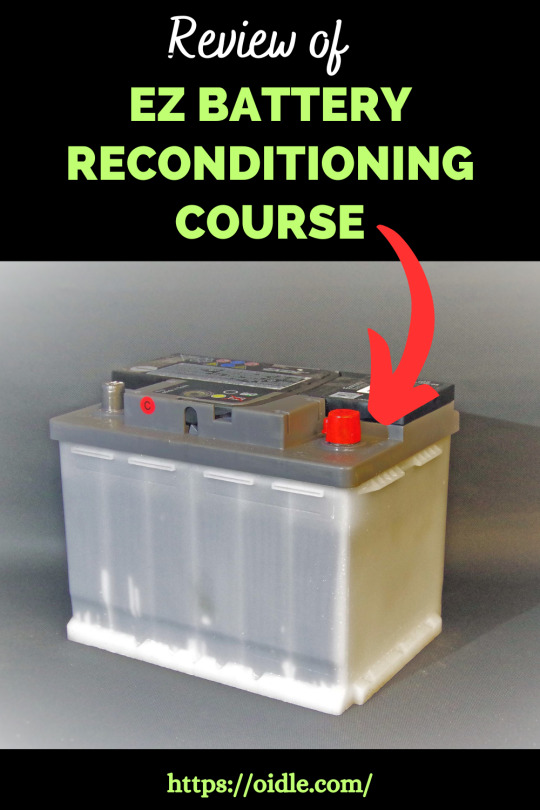
Review of the EZ Battery Reconditioning Course? What is it and does it really work?
Read review today.
#battery#batterylife#batteryreplacement#batterystorage#batterypower#batterycharging#batterybackup#reconditioning#automotiveindustry#enginerecondition#surfacegrinding#machinery#valveseatcutting#valveseatmachine#grindingmachine#crankshaftgrinding#rebuildingengine#enginereconditioning#batteryrecycling#batteryrepair#batteryrecharge#batteryconnection#batterycar#recycle#recyclebatteries
0 notes
Link

Worrying about how to correctly charge the battery to keep your modern
#ElectricScooter in topnotch condition? Here are the key tips for you.
Know more at https://tridemobility.com/
0 notes
Text
youtube
Battery Inverter Services Mehdipatnam Hyderabad +91 9247753412 +91 9160004772 www.batterystores.in#amaron
Battery Experts Your Nearest Amaron Car Battery Home Inverter Ups Dealers in Hyderabad Secunderabad Telangana India,Amaron Inverter Battery Dealers,Amaron Automotive Battery Dealers, Amaron Two Wheeler Battery Dealers,Amaron Three Wheeler & Four Wheeler Battery Dealers,Amaron SMF Battery Dealers, Amaron Generator Battery Dealers, Amaron Scrap Battery Dealers,Amaron Battery Inverter Suppliers Retailers Wholesalers provides all car batteries inverters cash on delivery, free home delivery installation service in across city in Hyderabad Secunderabad Telangana India all locations. https://youtu.be/O8uanYrTyFo
Battery Experts provides Inverter Repair, Battery Charging, Jump Start Service and Scrap Battery Buyers, Inverter Amc, Inverter Battery Installation, Inverter Trolley Home Delivery, Car Battery Installation, Car Battery Jump Start, Car Battery Charging, Inverter Battery Charging Inverter Installation, Inverter Battery Installation, Inverter Home UPS Amc, Car Battery Road Side Assistance, Emergency Inverter Installation, Inverter Check up, Inverter Wiring in Hyderabad Secunderabad Telangana India..more Services in low cost we provide.
Contact Amaron Battery inverter Services Hyderabad -https://batterystores-india.blogspot.com +91 92477 53412+91 92477 53412+91 9160004772
#amaron#amaronbattery#inverter#inverterrepair#smfbattery#generatorbattery#invertershop#batteryshop#battery#batterycharging#jumpstarter#jumpstart#distilledwater#agmbattery#homeinverter#ups#installation#malakpet#amberpet#musheerabad#Khairatabad#jubileehills#sanathnagar#nampally#karwan#goshamahal#charminar#chandrayangutta#Yakutpura#bahadurpura
0 notes
Photo
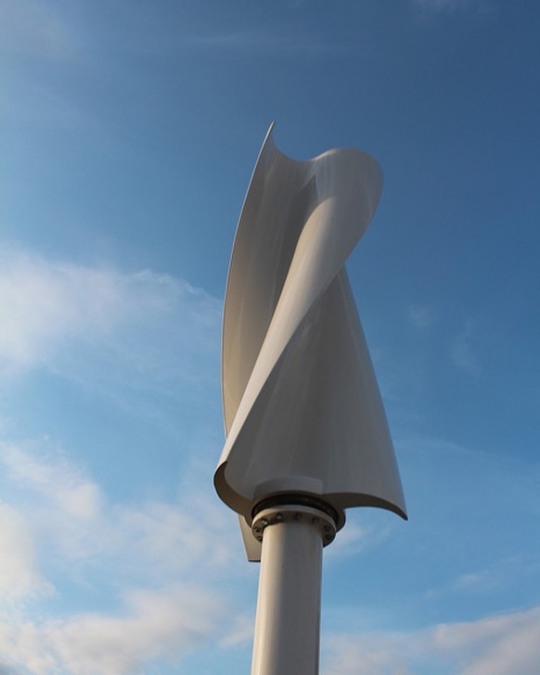
Now to install the wind turbines at the camp and on the van to add charging current. #windpower #batterycharging https://www.instagram.com/p/Ci8KSHULrCH/?igshid=NGJjMDIxMWI=
0 notes
Text
LiFePO4 Battery Charging FAQ:What you should know?
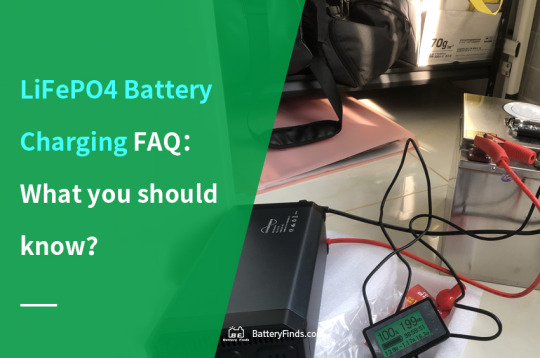
LiFePO4 battery charging is an important thing for everyone who is using LiFePO4 batteries. A suitable charger can determine the life of the battery to a certain extent, and it has been proved that many people’s LiFePO4 batteries fail prematurely or have problems. The root cause is the lack of understanding of the charging process and the wrong choice of the charger. And some classic questions have been brought up all the time.
What is the principle of LiFePO4 Battery Charging?
There is no doubt that the principle of LiFePO4 battery charging is the same as that of other lithium batteries, which is the process of lithium ions passing through the separator from the positive electrode to the negative electrode.
What circumstances can LiFePO4 Batteries be charged normally?
For the charging environment of LiFePO4 batteries, the most important thing we need to care about is temperature. LiFePO4 batteries can be safely charged between 0°C ~ 45°C (32°F ~113°F), and do not require any additional equipment to ensure the normal charging process. Of course, this premise is that your LiFePO4 battery is already equipped with an excellent BMS, which can monitor the battery’s condition to prevent overcharge, over-discharge, and over-current.
Due to the nature of lithium batteries, LiFePO4 batteries cannot be charged normally at temperatures below 0°C (32°F) and must rely on some external devices to support charging, such as some heating elements. In winter, if you do not need to use the battery, it is highly recommended to do battery winterize, which can ensure that your battery can survive the severe cold. In addition, in the case of relatively high temperatures, LiFePO4 batteries can still maintain a stable state of charge without problems.
In addition to the temperature requirements, air humidity and the surrounding environment are also what we need to pay extra attention to. Excessive humidity and a complex environment are not suitable for LiFePO4 battery charging, which may cause battery damage.
What is a LiFePO4 Battery Charger?
LiFePO4 battery charger is a safe and efficient charger specially designed for LiFePO4 batteries. Since the nominal voltage of the LiFePO4 battery is 3.2V, the voltage of the dedicated charger will be above 3.65V, but the most popular one is the It is called a 12V charger. Similarly, in order to meet the needs of different voltage systems, chargers with larger voltages also exist.
The LiFePO4 battery charger adopts the CCCV charging method, that is, the charging mode of constant current and then constant voltage. This charging mode is more friendly to LiFePO4 batteries and can be fully charged faster. Take a single 3.2V LiFePO4 battery as an example, 3.7V~4V is the upper limit of the voltage, and a normal LiFePO4 battery charger will stop boosting the voltage at about 3.65V, and fill the battery with the remaining power at a constant voltage.
I have a charger for lead-acid batteries, do I still need to buy a LiFePO4 Battery Charger?
Generally speaking, since LiFePO4 batteries are often used as an upgrade project for lead-acid batteries, what we cannot ignore is that the voltage of a single lead-acid battery is 2V, while that of a single LiFePO4 battery cell is 3.2V. It is worth mentioning that the logic of lead-acid battery chargers is not the same, and lead-acid battery charging will have a floating charge stage. Since the voltage of LiFePO4 batteries will be higher, the lead-acid battery charger may identify errors and end the normal charging phase prematurely, which will result in LiFePO4 batteries not being fully charged.
So, can LiFePO4 batteries use lead-acid battery chargers? Theoretically possible, but not recommended. Because the effect is not as good as a special charger, and the connection between the lead-acid battery charger and the lead-acid battery charger needs to be cut off in time after charging, otherwise problems may occur. And if the BMS is not working properly, there is a risk of battery damage. Therefore, for safety reasons, it is not recommended to use lead-acid battery chargers.
Will cheap LiFePO4 Battery Chargers works?
It works, but this is highly not recommended. There are many reasons for the low price. It may be due to poor materials, lack of manufacturing process, confusion of charger parameters… Of course, it is not ruled out that it is a manufacturer’s promotion, but this possibility is too low. The price of LiFePO4 batteries is definitely not cheap, there is no need to risk using cheap chargers.
Can a higher voltage charger be used for LiFePO4 Battery Charging?
This is not allowed. The voltage of the charger can only be slightly higher than that of the battery. If the charging voltage is too high, the load of the battery will increase. The less harmful ones will affect the battery life, and the more serious ones will cause the internal burning of the battery. Therefore, when choosing a charger, you need to take it seriously. When necessary, you can ask the battery manufacturer and electrician’s opinion, and don’t blindly choose a charger. However, in the vast majority of cases, the BMS will prevent charging, so there is no need to worry too much about the safety of the battery.
Can solar chargers as well as alternators do LiFePO4 Battery Charging?
LiFePO4 batteries can be charged from many sources, which can be the grid, solar/wind, or alternators. However, it should be noted that different sources of electricity need to use different chargers to charge the battery, otherwise it will not be able to charge.
Summary
LiFePO4 battery charging is an important task. Although LiFePO4 battery charging is a relatively automated process, only when we understand the relevant knowledge can we ensure that there is no problem in the charging process, and we can make better use of LiFePO4 batteries. As a result, our lives will become more convenient.
Origin: https://batteryfinds.com/lifepo4-battery-charging-faq-what-you-should-know/
0 notes
Text





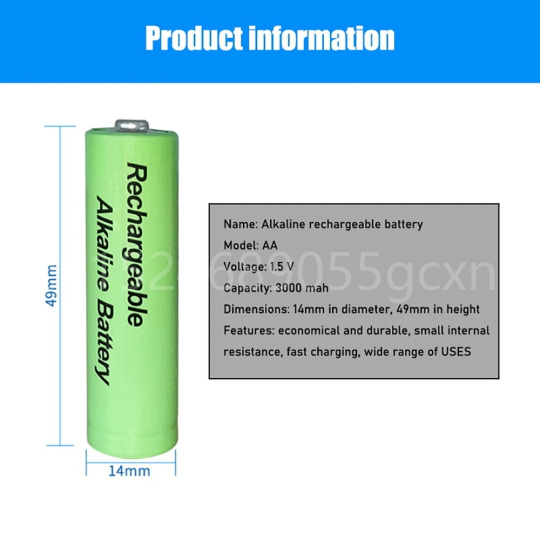
1-2pcs New AA Rechargeable Battery 1.5V 3000mah Alkaline Batteries for Remote Control Electronic Toys LED Light Shaver Radio
Original price: USD 2.21
Now price: USD 1.33
Click&Buy:
#Aliexpress#BeGouriStore#rechargeablebattery#rechargeablebatterycar#rechargeablebatterymod#rechargeablebatterypack#rechargeablebatterylife#rechargeablebatterylamp#rechargeablebatteryjeep#rechargeablebatterycharger#rechargeablebatteryhandsanitizer#rechargeablebatteryinportharcourt#aarechargeablebattery#aarechargeablebatteries#aarechargeablebatteriesusb#aarechargeablebatteries1200mah#aarechargeablebatteries2400mah#Battery#battery#batterypark#batterypack#batteryhealth#batterycharger#batterypowered#batterystorage#batteryoperated#batteryparkcity
0 notes
Text

Introducing the solar battery charger: a sleek and portable device featuring solar panels that harness sunlight, transforming it into usable electrical energy. This energy is efficiently stored within an internal battery, ready to power up a range of devices including smartphones, tablets, cameras, and portable power banks. Experience convenience and eco-friendly charging on-the-go with this innovative solution.
see more:https://upvsolar.com/ contact us:9894442000
0 notes
Text
On-Board Charger Market Analysis 2024 Expectation Surges with Rising Demand, and Key Players to 2030

The qualitative report published by Exactitude Consultancy research on the “On-Board Charger Market offers an in-depth examination of the current trends, latest expansions, conditions, market size, various drivers, limitations, and key players along with their profile details. The On-Board Charger market report offers the historical data for 2018 to 2023 and also makes available the forecast data from the year 2024 to 2030 which is based on revenue. With the help of all this information research report helps the Market contributors to expand their market positions. With the benefit of all these explanations, this market research report recommends a business strategy for present market participants to strengthen their role in the market. This report analyzes the impact of the Covid 19 pandemic on the On-Board Charger Market from a Global and Regional perspective.
The global On-Board Charger Market is estimated to increase at a 15.2% CAGR from 2024 to 2030, from USD 3.99 billion in 2023.
For The Full Report Click here:
https://exactitudeconsultancy.com/reports/13661/on-board-charger-market/
#ElectricVehicleCharger#EVChargingTechnology#ChargingInfrastructure#ElectricCarCharger#EVCharger#VehicleCharging#ChargerTechnology#ChargingStation#BatteryCharger#EVInfrastructure#EVChargingSystem#ElectricVehicleTechnology#GreenEnergy#SustainableMobility#CleanTransportation#EVAdoption#FutureOfMobility#RenewableEnergy
0 notes
Text
Doing business is not about rhetoric, it's about honesty.
0 notes
Text
A Compact Power House :NOCO GENIUS1 1A Smart Car Battery Charger.
A Compact Powerhouse: NOCO GENIUS1 1A Smart Car Battery Charger Review
Introduction:As a car enthusiast and someone who values the reliability of their vehicle, I recently invested in the NOCO GENIUS1 1A Smart Car Battery Charger. After using it for a while, I can confidently say that it’s a compact powerhouse that delivers on its promises.
Design and Build Quality:One of the first things that…

View On WordPress
#ankerpowerbank#batterycharger#batterychargeraa#batterychargeraaaa#batterychargercar#batterychargermaintainer#batterychargerphone#bestpowerbank. nocobatterycharger#carbatterycharger#carjumpstarter#tricklecharger
0 notes
Text
OptiMate's winter battery saving tips
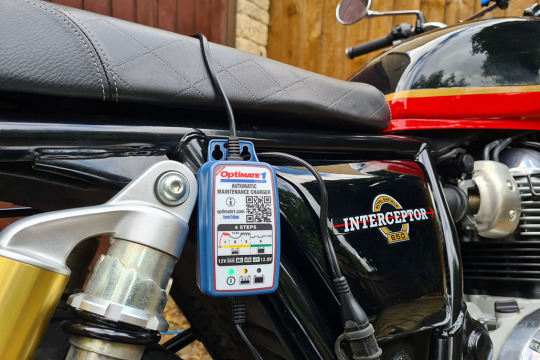

Don’t get left out in the cold
OptiMate, the battery-saving experts, offer four essential tips to keep your motorcycle battery healthy until spring.
Motorcycle batteries lose a lot of their cranking power in colder weather, making failure much more common during the winter months.
As the temperature drops, the chemical reaction inside the battery slows down, significantly reducing its capacity and ability to turn over the engine; at 0°C even a fully charged battery can lose around a third of its starting power.
Colder weather also increases the energy needed to crank the engine, leading to a double whammy of reduced power and higher energy demand.
Factor in the increased use of lights and accessories, like heated grips and clothing, and your bike’s battery faces serious pressure.
Battery failure - an unwelcome and expensive event at any time of year - can be prevented with a few simple steps and the right approach to maintenance. OptiMate, the battery saving experts, share four essential tips to help keep your battery in good health until spring.
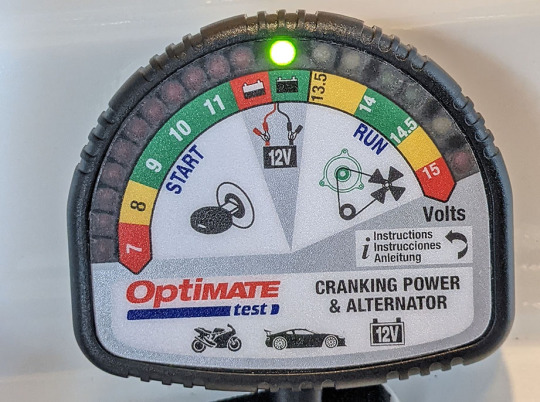
Age
Older batteries are more susceptible to failure during the winter months, since they already have reduced capacity due to the ageing process. If your bike’s battery is four years old or more, you should consider replacing it with a new unit, even if the existing one appears healthy. And if you plan on running accessories like heated grips and clothing, it’s worth upgrading to a higher power unit, to compensate for the increased pressure it will be under.
You can check the state of your battery using a voltmeter or, if you prefer something simpler, the OptiMate TEST gives an instant readout and can also be used to test the charging system.
Environment
Batteries perform better and last longer if they’re kept at a stable temperature. For bikes stored in unheated garages or sheds, an indoor cover will help prevent condensation and provide some insulation. Motorcycles kept outside need a waterproof and breathable cover to minimise the difference between day and night time temperatures around the battery. For bikes parked outdoors for long periods between use, taking the battery out of the bike and keeping it indoors on a maintainer will prolong its lifespan, but only do this if the bike isn’t fitted with an alarm or tracker.
Use
Short journeys may not be enough to keep your battery in a healthy state of charge - in fact they may actually do more damage than good. This is because the length of time the alternator has to recharge the battery may not be enough to offset the energy cost of starting the engine and powering on-board electrical equipment during the trip. To keep your battery in a healthy state of charge, make sure you go on longer trips regularly; ideally at least 10-15 miles at or around motorway speeds.
Charging
If you don't use your bike very often through the winter months - or plan to hibernate it until spring - charge can be lost to alarms and immobilisers, clocks and on-board computers, as well as through self-discharge. The battery uses a little of its own energy every day to keep itself alive. Connecting your motorcycle to a battery charger/maintainer, like the OptiMate 1 Duo, will ensure the battery remains fully charged through the winter season, ready to start up in the spring, as well as extending its lifespan.
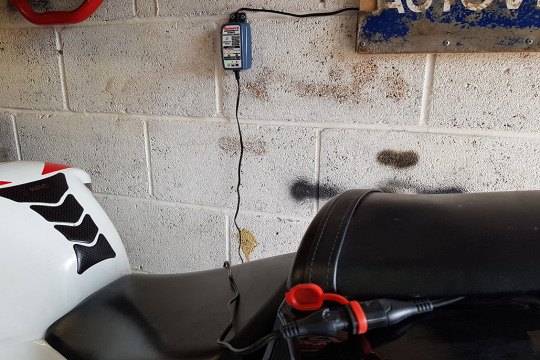
Read the full article
0 notes
Text
Dual Battery Field Power Charger | Indipro
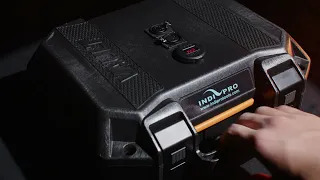
Introducing the Indipro Dual Battery Field Power Charger! 🎥⚡ Keep your production powered up on the go with this compact and efficient charger. Charge two batteries simultaneously, ensuring your gear stays juiced for all your shooting needs. Say goodbye to downtime and hello to uninterrupted creativity!
#Indipro#BatteryCharger#FieldPower#OnTheGo#ProductionGear#FilmmakingEssentials#DualBatteryCharger#PowerUp#Efficiency#UninterruptedCreativity
0 notes
Link
Are you tired of dealing with dead batteries and the inconvenience they bring? The best answer battery problems is a Schumacher battery charger.
0 notes